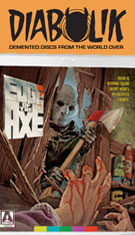



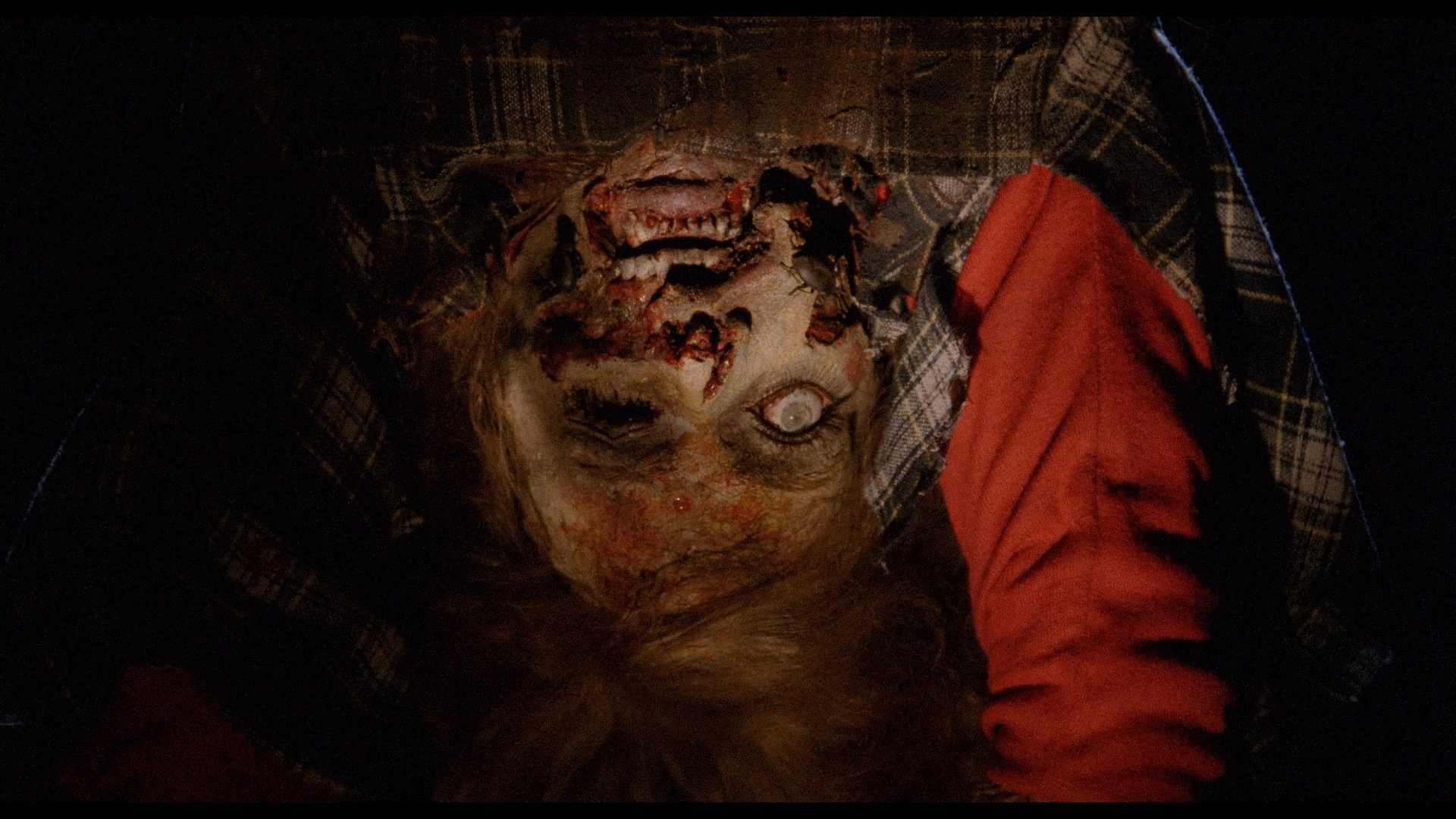 of Spain’s most important horror directors,
of Spain’s most important horror directors, 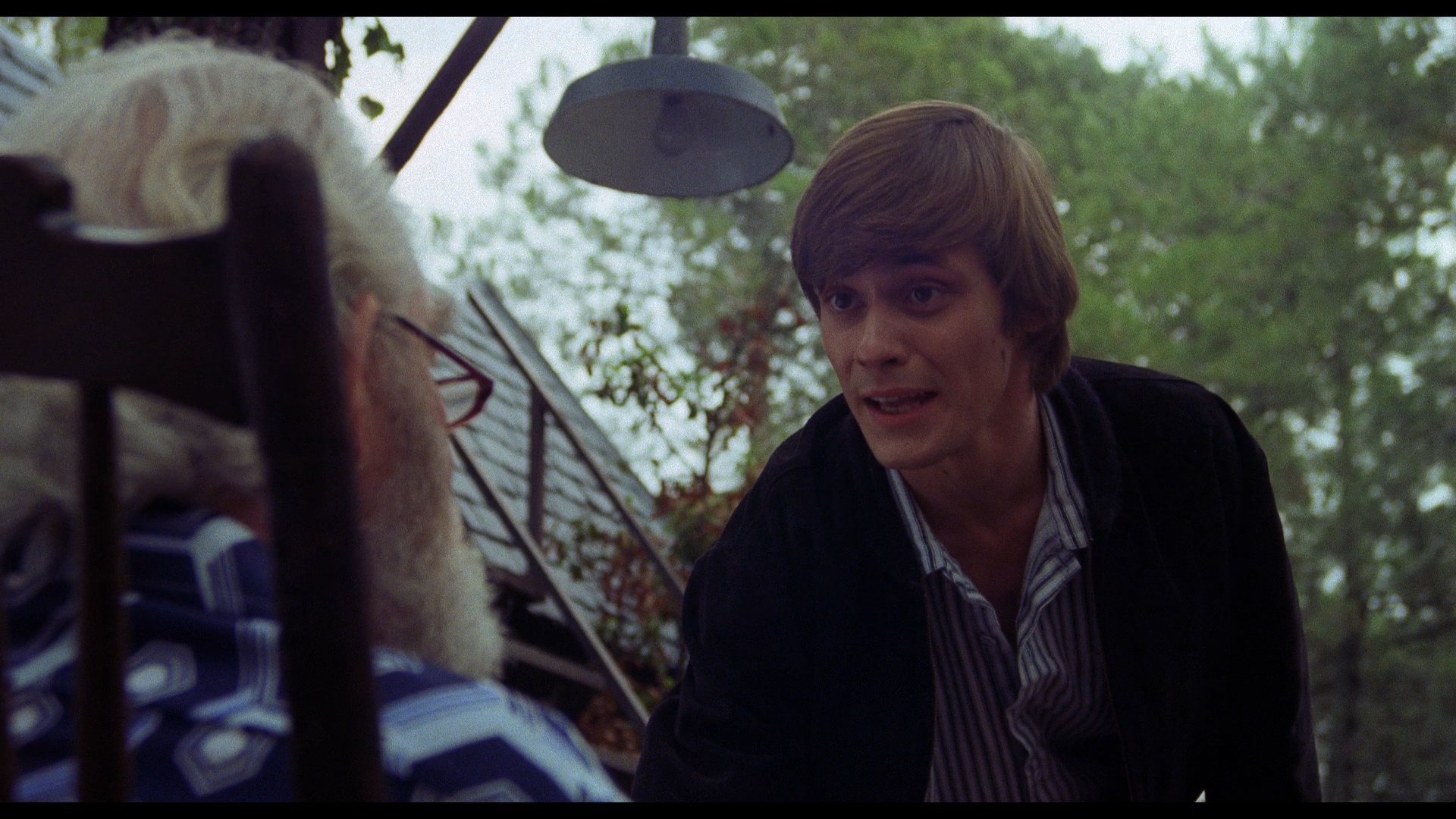 José Ramón Larraz made his name with a string of British-shot gems like Vampyres and Symptoms that continue to amass bigger fan bases now than they ever enjoyed upon their initial releases. However, the radical shifts in international distribution in the 1980s threw a wrench in the world of European horror, with big screen opportunities dwindling by the day and target audiences far more content to find cheap thrills via their own VCRs at home. Along with fellow countryman J.P. Simon (with Slugs, The Rift, and Cthulhu Mansion), he had a surprising resurgence cranking out horror films aimed at the home video market with a tone geared to be as American as possible. In Larraz’s case that even meant adopting the name “Joseph Braunstein” for both Edge of the Axe and Rest in Pieces, after which he signed his own name to the entertaining Deadly Manor. There isn’t a whole lot of Larraz’s artistic identity visible in Edge of the Axe (which could’ve been made by Nico Mastorakis without any major changes), but that’s hardly a bad thing as it focuses on delivering eccentric slasher thrills with a hefty body count and more than a few crackpot plot twists.
José Ramón Larraz made his name with a string of British-shot gems like Vampyres and Symptoms that continue to amass bigger fan bases now than they ever enjoyed upon their initial releases. However, the radical shifts in international distribution in the 1980s threw a wrench in the world of European horror, with big screen opportunities dwindling by the day and target audiences far more content to find cheap thrills via their own VCRs at home. Along with fellow countryman J.P. Simon (with Slugs, The Rift, and Cthulhu Mansion), he had a surprising resurgence cranking out horror films aimed at the home video market with a tone geared to be as American as possible. In Larraz’s case that even meant adopting the name “Joseph Braunstein” for both Edge of the Axe and Rest in Pieces, after which he signed his own name to the entertaining Deadly Manor. There isn’t a whole lot of Larraz’s artistic identity visible in Edge of the Axe (which could’ve been made by Nico Mastorakis without any major changes), but that’s hardly a bad thing as it focuses on delivering eccentric slasher thrills with a hefty body count and more than a few crackpot plot twists.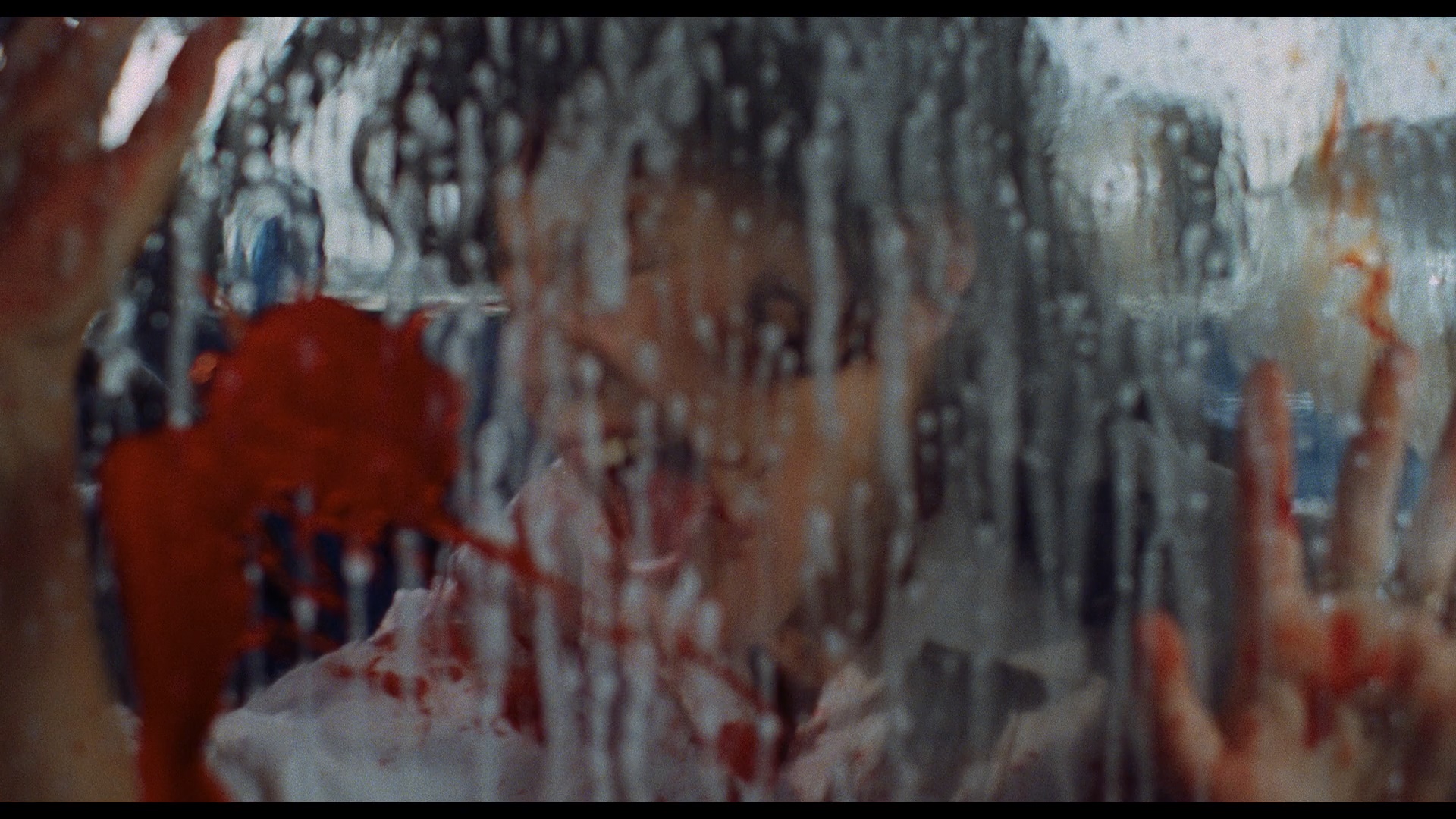 wash.
wash. 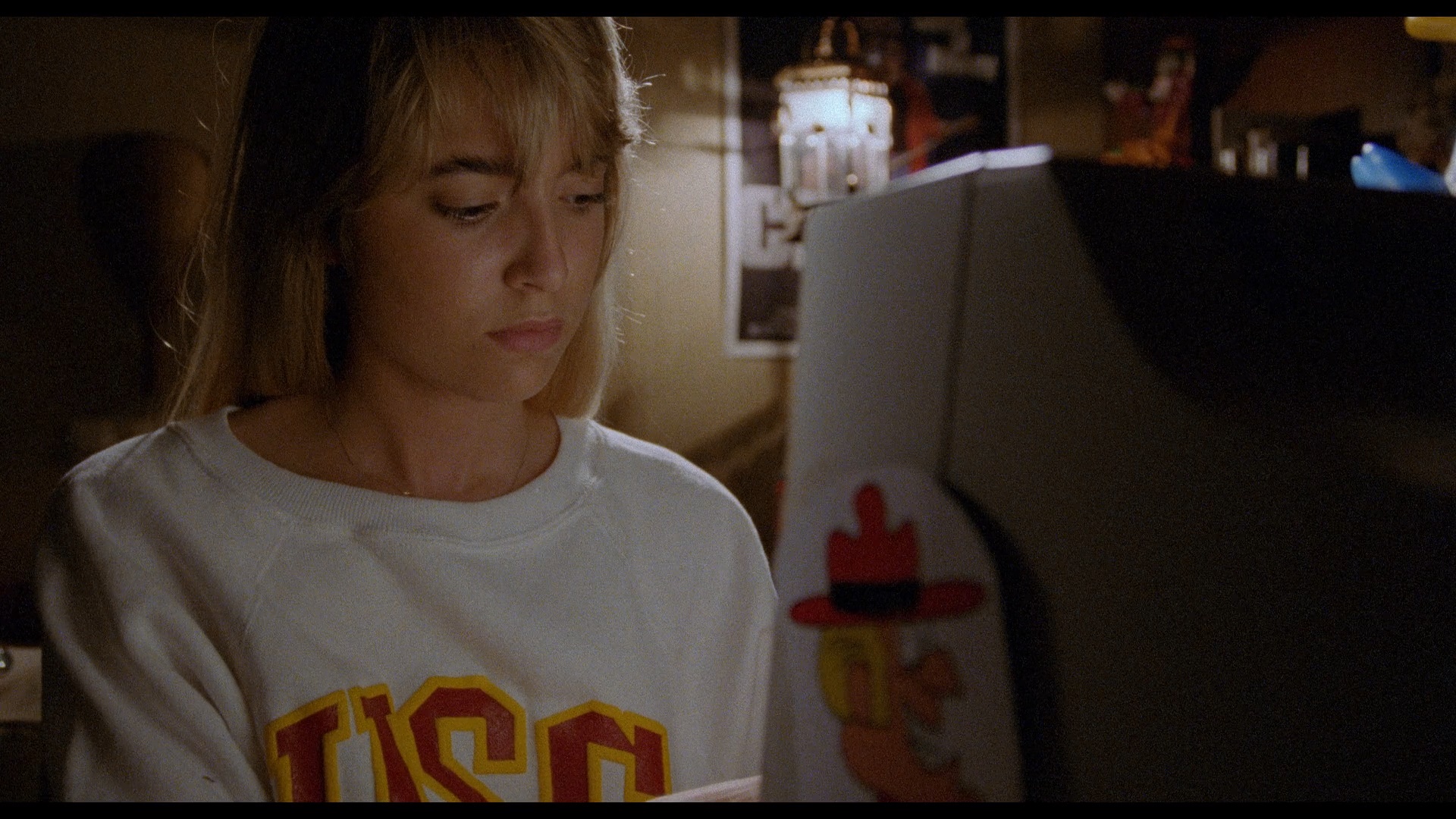 Electronics nut and computer devotee Gerald (Future-Kill’s Faulks), who's still giddy about getting a desktop, decides his hi-tech expertise could be useful in finding a pattern to the murders (as well as other odd incidents like a bloody severed hog head turning up in someone's bed) and ends up enlisting the aid of his new girlfriend, Lillian (Lane), who’s fearful that her cousin Charlie (last seen locked away in a loony bin) could have something to do with the rampage.
Electronics nut and computer devotee Gerald (Future-Kill’s Faulks), who's still giddy about getting a desktop, decides his hi-tech expertise could be useful in finding a pattern to the murders (as well as other odd incidents like a bloody severed hog head turning up in someone's bed) and ends up enlisting the aid of his new girlfriend, Lillian (Lane), who’s fearful that her cousin Charlie (last seen locked away in a loony bin) could have something to do with the rampage.  fashion choice by one of the major characters.
fashion choice by one of the major characters.  cover art that made this a steady rental item for quite a while. After that it essentially disappeared for decades until it was revived by Arrow Video hot on the heels of its essential Blood Hunger Larraz box in 2020. As you'd expect, it looks exponentially better here than ever before courtesy of a new 2K scan of the original camera negative, looking far more rich and atmospheric than the ancient VHS version with the climax in particular playing a lot better now with actual deep blacks and clear detail. The LPCM English and Spanish audio tracks are included, both sounding immaculate, with optional English SDH or English translated subtitles. The English track is obviously preferable since that's how the actors performed, but it's interesting to compare the two with some little variations scattered throughout the dialogue.
cover art that made this a steady rental item for quite a while. After that it essentially disappeared for decades until it was revived by Arrow Video hot on the heels of its essential Blood Hunger Larraz box in 2020. As you'd expect, it looks exponentially better here than ever before courtesy of a new 2K scan of the original camera negative, looking far more rich and atmospheric than the ancient VHS version with the climax in particular playing a lot better now with actual deep blacks and clear detail. The LPCM English and Spanish audio tracks are included, both sounding immaculate, with optional English SDH or English translated subtitles. The English track is obviously preferable since that's how the actors performed, but it's interesting to compare the two with some little variations scattered throughout the dialogue.  second audio commentary with the slasher-savvy gang from The Hysteria Continues podcast dives into the market for home
second audio commentary with the slasher-savvy gang from The Hysteria Continues podcast dives into the market for home  video slashers at the time, the rather makeshift casting process, and the backgrounds of several of the participants (including Spanish horror stalwarts Patty Shepard and Jack Taylor) along with the directorial approach here versus Larraz's earlier work. They also have a bit of fun with that whole psychiatric nurse and part-time hooker bit, which could only come from a late '80s slasher movie. A new interview with Faulks, "Gerald's Game" (11m4s), is a very cheerful account of his brief dabbling in acting in L.A. as well as his life career as a teacher when he went back to Texas, not to mention his callback for a role in The Fly II that eventually went to Eric Stoltz. Then Moseley appears in "The Actor's Grind" (11m23s) going into his upbringing in North Carolina and his experiences on this film versus the much more precise and rigorous process of doing soap operas, in his case starting off with Santa Barbara. Finally, "The Pain in Spain" (7m47s) features special effects and makeup artist Colin Arthur explaining how he achieved some of the practical effects in the film, including one he was particularly proud of that didn't make the final cut for some reason. Finally a gallery features various lobby cards, still, and home video art from the English and Spanish releases, and the reversible sleeve comes with new artwork by Justin Osbourn (also included on a limited slipcase edition) as well as an insert booklet with a new essay by Amanda Reyes (in the first pressing only).
video slashers at the time, the rather makeshift casting process, and the backgrounds of several of the participants (including Spanish horror stalwarts Patty Shepard and Jack Taylor) along with the directorial approach here versus Larraz's earlier work. They also have a bit of fun with that whole psychiatric nurse and part-time hooker bit, which could only come from a late '80s slasher movie. A new interview with Faulks, "Gerald's Game" (11m4s), is a very cheerful account of his brief dabbling in acting in L.A. as well as his life career as a teacher when he went back to Texas, not to mention his callback for a role in The Fly II that eventually went to Eric Stoltz. Then Moseley appears in "The Actor's Grind" (11m23s) going into his upbringing in North Carolina and his experiences on this film versus the much more precise and rigorous process of doing soap operas, in his case starting off with Santa Barbara. Finally, "The Pain in Spain" (7m47s) features special effects and makeup artist Colin Arthur explaining how he achieved some of the practical effects in the film, including one he was particularly proud of that didn't make the final cut for some reason. Finally a gallery features various lobby cards, still, and home video art from the English and Spanish releases, and the reversible sleeve comes with new artwork by Justin Osbourn (also included on a limited slipcase edition) as well as an insert booklet with a new essay by Amanda Reyes (in the first pressing only). ![]()